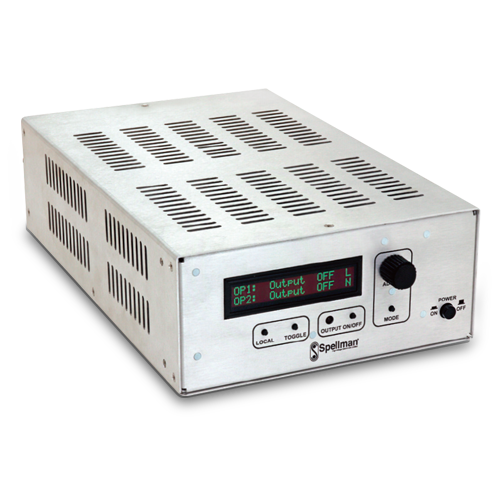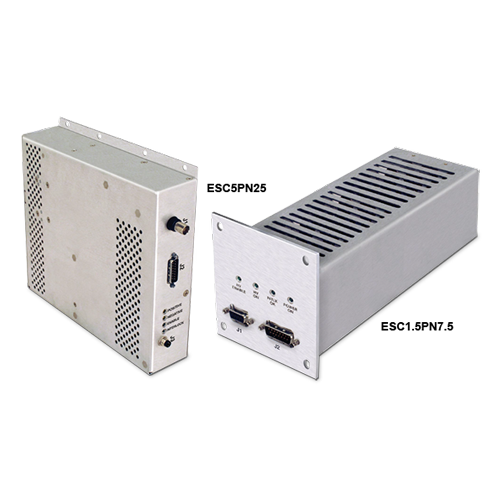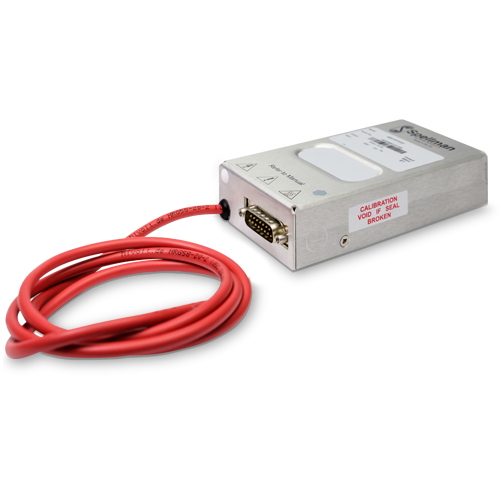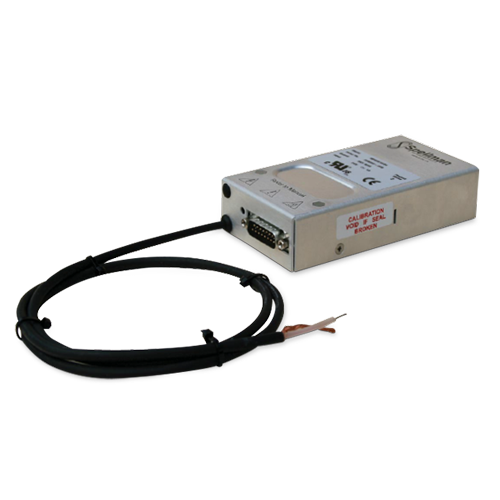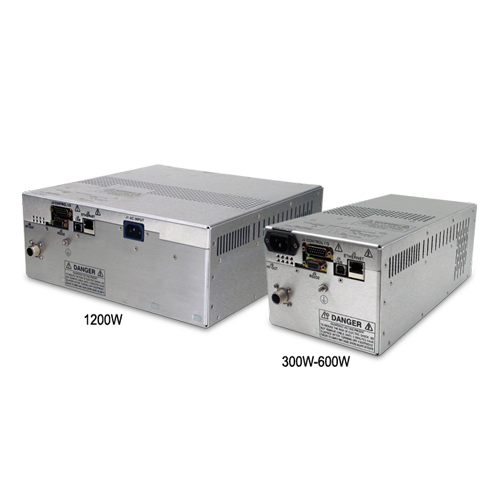Abrazadera electrostática
In semiconductor and liquid crystal panel manufacturing processes, vacuum chucks and mechanical chuck systems have conventionally been used to secure the substrate for handling. However, due to the effects of adsorption, distortion and a requirement for improved reliability, chucks that utilize electrostatic force have been widely adopted in today’s generation of semi fab equipment to overcome these limitations.
An electrostatic chuck consists of a platen with surface electrodes which are biased with high voltage to set up an electrostatic force between the platen and the wafer.
Two types of electrostatic chucks are available: the Coulomb and Johnsen-Rahbek (J-R) types. These are distinguished by their dielectric characteristics and, therefore, the way the clamping force is generated. A Coulomb chuck functions like a conventional dielectric capacitor. The J-R type has a large but finite resistance, so current flows through it and the substrate when the surfaces are in close contact and voltage is applied. Charge accumulates at the interface between substrate and dielectric which provides the clamping force.
In addition, different configurations of electrodes (or poles) on the chuck are used to get different characteristics. Monopolar, bipolar (two poles) and multipolar chucks (including 6 phase hexapolar types) are available depending on the application.
Spellman can provide power supplies for the complete range of e-chucks with features that include:
- high-voltage bipolar outputs (positive/negative),
- output polarity reversal functions for easier wafer chucking/de-chucking,
- capability to detect the state of the wafer by capacitance measurement (Coulomb chucks) or current measurement (J-R chucks),
- analogue and digital interfaces for easy integration into a variety of systems
- high reliability, mechanical relay free designs.
Spellman offers extensive design knowledge and manufacturing capabilities, and so can provide a broad range of customized products to satisfy a variety of requirements. Depending on the application this may also include options such as high voltage biasing/offset and R.F. filtering.
- Diseñado específicamente para aplicaciones de E-Chuck
- Dos salidas reversibles de polaridad opuesta
- Nominal 2.5kV 3mA. Las amplitudes se establecen de forma independiente.
- Función de De-Chuck configurable por el usuario automática
- Velocidad de subida de 300mS manejando una carga capacitiva de 20nF.
- Control del panel frontal a través de botones y pantalla LCD
- RS-232, RS-485 e interfaz Ethernet
- GUI gratis para pruebas y trabajos de desarrollo
- Capacidad del producto de la plataforma
- Salida reversible con referencia a tierra
- Salida Bipolar Reversible Flotante
- Entrada de CC de +24 V CC
- 31 / 5,000 Diagnóstico integral de fallas
- Dispositivo de bloqueo de seguridad de alto voltaje
- Se requiere un número “X” personalizado
- Modulo de 10 Watts extremadamente compacto y de alto desempeño
- Multiples interfaces de control: Analogo diferencial, RS-232 y RS-485
- Monitores de Voltaje y Corriente
- Alta estabilidad, bajo coeficiente de temperatura
- Rizo y ruido ultra bajo, abajo de 1/f Banda
- GUI gratis para prueba y trabajo de desarrollo
- Control de funciones digitales: Múltiple operación de unidades, control de corriente, banderas de estado y función wobbler
- Entrada diferencial para programación de voltaje
- Control RS-232/RS-485 opcional
- Monitores y controles de voltaje y corriente
- Alta estabilidad, ruido y rizo ultra bajos
- Marca CE y certificado UL61010A-1
- Modelos de 1 kV-160 kV, 300 W, 600 W y 1200 W
- Compacta y ligera
- Entrada universal, factor de potencia corregido
- Interfaces estándar USB, Ethernet y RS-232
- Cumplimiento CE y reconocimiento UL


